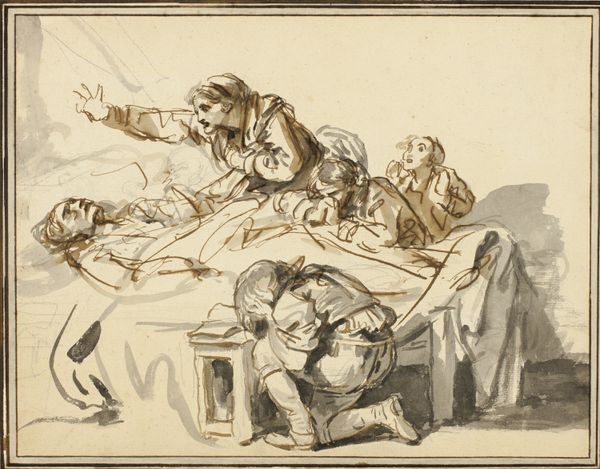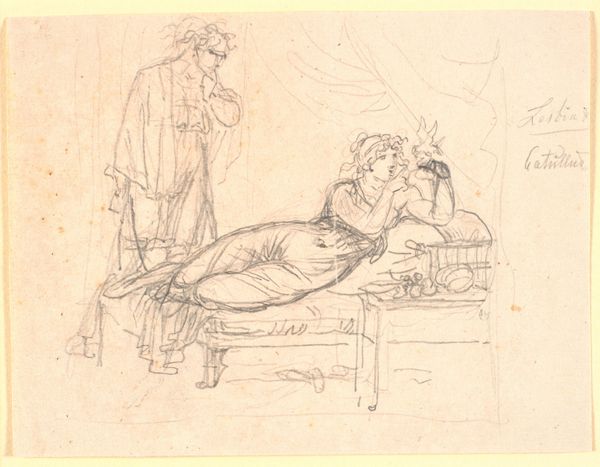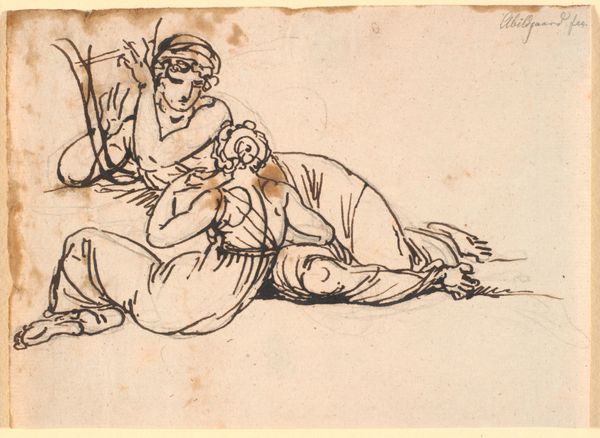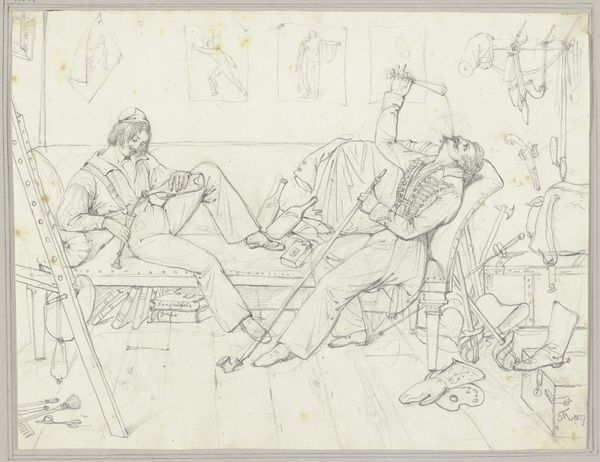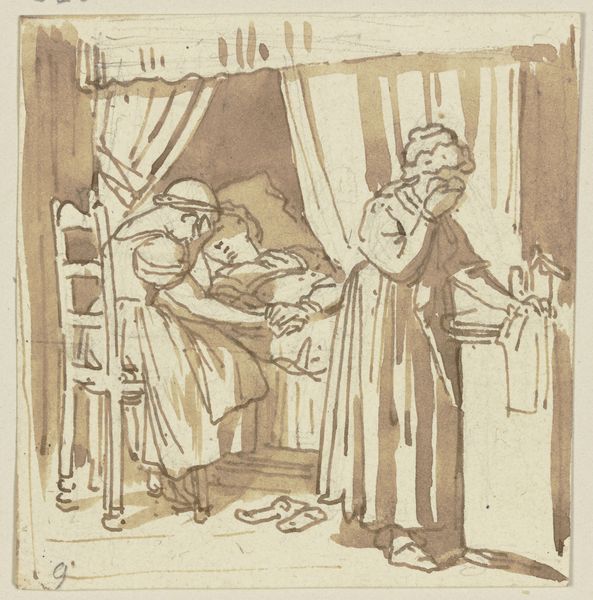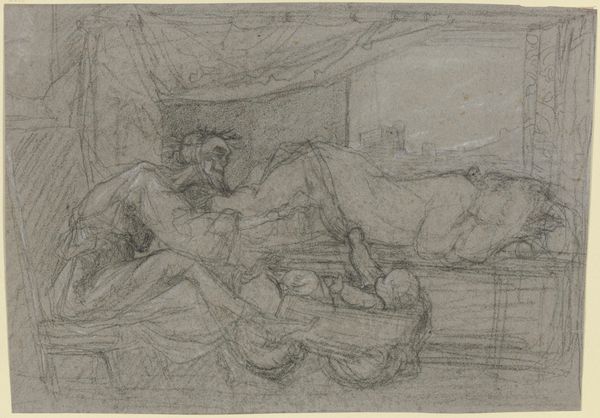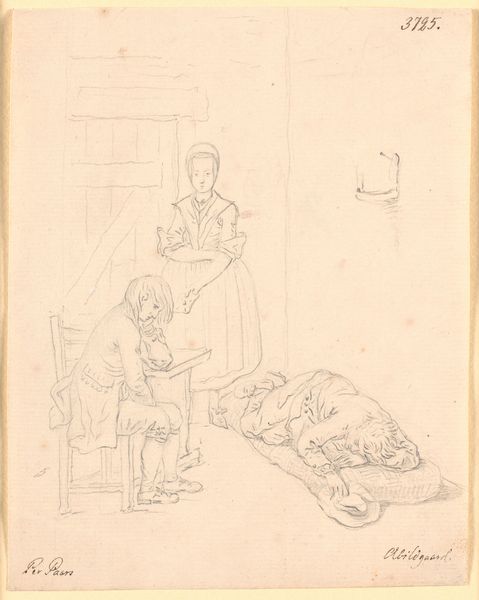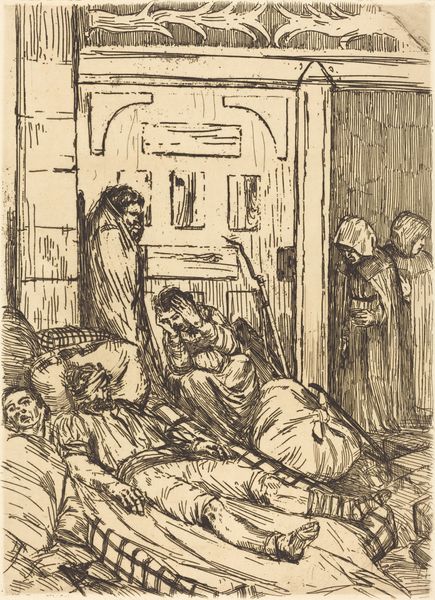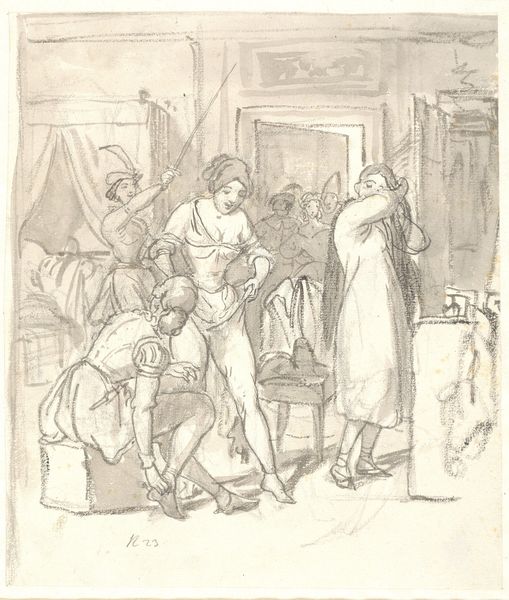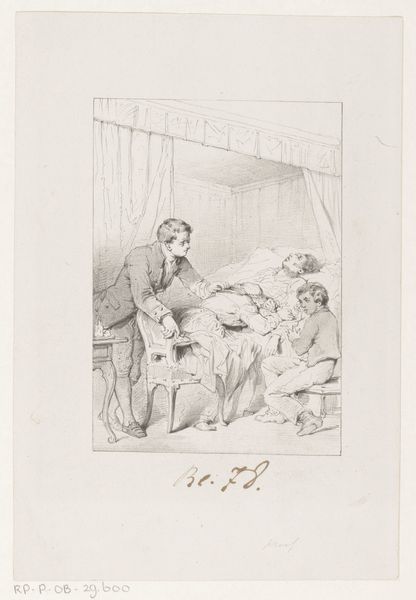
drawing
#
drawing
#
figuration
#
history-painting
#
academic-art
Dimensions: 164 mm (height) x 194 mm (width) (bladmaal)
Editor: This is "Studie til Papirius og hans moder," a drawing created between 1743 and 1809 by Nicolai Abildgaard. It looks like ink on paper and has a somewhat domestic feel despite the classical robes. What's your take on this drawing? Curator: I see a clear demonstration of Abildgaard's commitment to a specific production of history and morality through very precise choices in material. The relative simplicity of the ink drawing, especially compared to paintings of the era, reveals the bones of academic art production: draftsmanship and narrative construction were crucial to delivering history as moral instruction. Editor: So, you’re saying that the choice of a simple drawing, rather than a fully realized painting, highlights the method behind the historical subject? Curator: Precisely! The materiality directs us to consider the labour, from Abildgaard's hand practicing draughtsmanship, to the reproduction of 'historical' scenes that shaped understandings of civic virtue. Abildgaard offers not just the end product of a story, but implies a means of circulating this history itself through reproductive prints, dissemination in teaching and accessible drawing rooms of a rising bourgeoisie. It's about more than aesthetic beauty. It becomes a social technology. What does the domestic setting you noticed suggest about that consumption? Editor: Good question! It makes me think that Abildgaard expected this story, and potentially even its moral lessons, to be consumed on an intimate level. Thanks! Curator: Yes, absolutely. Considering the domestic setting within that material reality, we begin to see the ways Academic Art shaped public values by reaching even into the private lives of its consumers.
Comments
No comments
Be the first to comment and join the conversation on the ultimate creative platform.
